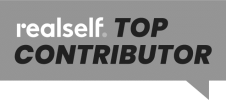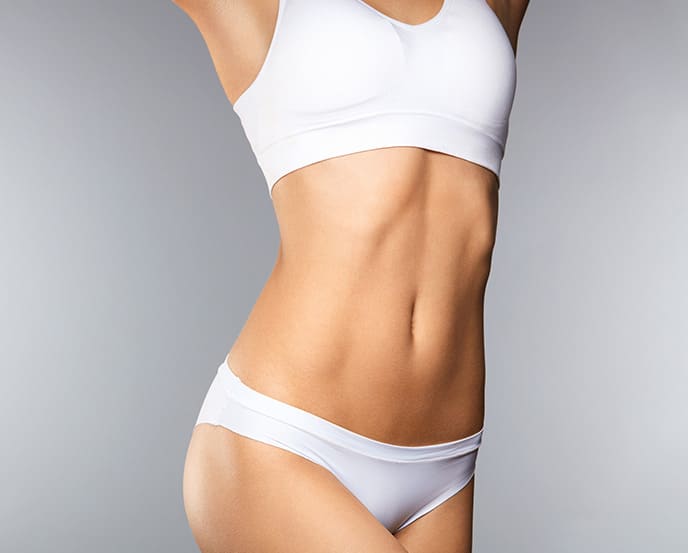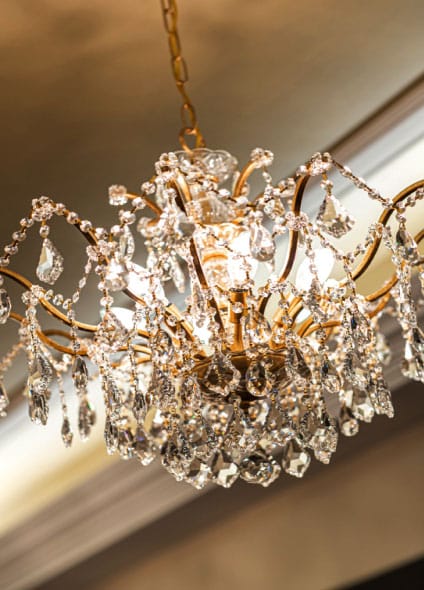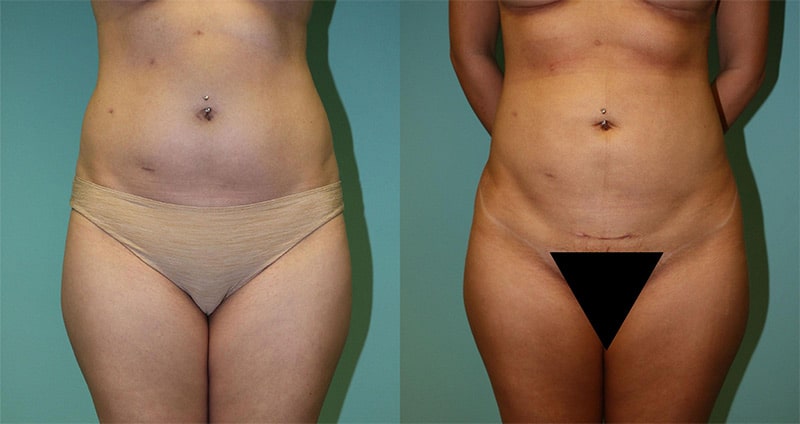Liposuction in Virginia, Washington D.C. and Maryland.
Embark on a journey of aesthetic excellence with The Naderi Center. Experience unparalleled artistry and precision for transformative beauty.
Improve Body Contours with Liposuction Benefits
Discover the gateway to a transformed physique with liposuction. This procedure brings a medley of advantages, from reshaping stubborn areas to enhancing your self-assurance. Here are more benefits:
Targeted Fat Reduction
Bid farewell to persistent fat pockets. Liposuction artfully sculpts areas like the abdomen, thighs, and hips, achieving smoother contours.
Boosted Confidence
Experience newfound self-esteem as your body gains sleekness. Liposuction’s dramatic results can rejuvenate your overall self-image.
Lasting Reshaping
Once the surgeon removes the fat, it’s gone for good. Liposuction offers lasting outcomes, inspiring you to embrace a healthier, more confident lifestyle.



Liposuction At The Naderi Center
Liposuction is an extremely effective, moderately invasive procedure designed to bring back smooth, shapely physical contours. By eliminating isolated areas of fatty tissue, the surgeon can sculpt targeted locations on the body for a natural, more youthful appearance. While liposuction performed alone can provide excellent results, the technique can also be combined with other cosmetic surgery procedures, like a tummy tuck surgery, or the Mommy Makeover, for more extensive body sculpting benefits.
Liposuction Summary

Mild to moderate
General Anesthesia
Approximately 1 hour per desired area
Each incision is tailored the patient’s unique needs
2-3 weeks
After a few days
1 week
$5,500 – $7,500 – Depends on number of areas
The most common areas for liposuction include
- Abdomen
- Ankles
- Breasts
- Calves
- Chin (submental)
- Flanks or love handles
- Hips
- Outer or inner thighs
- Upper arms
The Naderi Center’s breast and body plastic surgeon specialist has provided safe and effective liposuction procedures for hundreds of patients. Using the latest liposuction technology, the body plastic surgeon will tailor each liposuction session to the patient’s unique physical needs. Together with the patient, our specialist can determine the most beneficial technique to achieve the desired aesthetic results. Her knowledge and skills in body sculpting procedures make our surgeon and The Naderi Center the number one choice for liposuction in Maryland, Virginia, and Washington D.C.
Ideal Candidates for Liposuction
Anyone who is unhappy with the appearance of stubborn, lumpy, fatty tissue may find this cosmetic fat removal procedure beneficial. Ideally, potential candidates for liposuction should be in good health and will be at a stable and desirable weight. Their skin should be firm and elastic so that they don’t end up with sagging or loose tissue after the cosmetic procedure. For patients with lax, excess skin, the provider may recommend a tummy tuck surgery or lift instead of liposuction. Liposuction should not be used as a replacement for a healthier, more balanced diet and exercise. Nor should liposuction be considered weight loss surgery or a treatment for obesity.

A good liposuction candidate patient will fully understand the procedure and the recovery requirements. They should also have reasonable, realistic expectations for their treatment goals and goal weight. Liposuction is not ideal for patients who believe the procedure is a substitute for proper diet and nutrition. Also, this procedure will not effectively treat cellulite or stretch marks. At the initial consultation appointment, The Naderi Center’s body specialist will discuss any potential complications before determining if liposuction is the patient’s best option. If you have doubts about surgery, please ask your surgeon.

The Liposuction Consultation
To begin the liposuction process, potential patients will need to schedule a liposuction consultation. This appointment allows an individual to get to know the surgeon and learn more about the available liposuction techniques. Our plastic surgeon will carefully go over the medical history and perform a physical exam. Our surgeon will discuss the patient’s needs and desires, listening to what they would like to see from their liposuction procedure. The Naderi Center’s body specialist will use before/after photographs of our most recent patients to help patients get a good idea of their potential results. Our surgeon will answer any remaining questions at this time.
If our surgeon determines liposuction will be the most effective treatment for the patient’s needs, they will put together a personalized surgical plan. Our surgeon will review the instructions before and after the liposuction procedure. Before the patient leaves, the provider will determine the exact cost of liposuction treatment, and the patient coordinator will review all payment options.
The Liposuction Procedure
Our surgeon will perform the liposuction as an outpatient procedure at an accredited, local surgical center or hospital. The technique may require general anesthesia or local anesthesia with IV sedation. The procedure on average takes an hour per area to complete, depending on the individual and extent of correction. Once our surgeon has removed the desired amount of fatty tissue and achieved the desired results, the surgeon will place sutures for proper healing. Our surgeon will then place a post-operative compression garment to optimize healing and minimize swelling.
Your surgeon will determine the best liposuction technique during the consultation. They will tailor each procedure to the patient’s unique needs. Keep in mind that liposuction procedures combined with other surgical techniques may take longer to perform.
What Are the Different Types of Liposuction Techniques?
Body liposuction has advanced since its initial utilization for the removal of unwanted fat and body contouring. Patients these days can choose from a variety of surgical techniques to achieve optimal results. It is important to discuss with your surgeon what technique you prefer for achieving your desired results.
Technique 1
Tumescent liposuction
Tumescent liposuction is one of the oldest and most common techniques utilized today for the removal of unwanted fat. This technique involves the surgeon initially injecting the patient’s tissue with a sterile solution of salt water, epinephrine, and local anesthetic prior to the suctioning of the fatty tissue. The “tumescent” or liposuction solution helps with pain control, decreases blood loss, and aids in the removal of fatty tissue. The tumescent solution allows the injected area to swell and stiffen. The surgeon will then make small incisions on the skin to insert the liposuction cannula underneath the skin. The surgeon will then attach a liposuction cannula to a suction vacuum to remove the desired fat as well as some of the injected tumescent solution.
Technique 2
Power-assisted liposuction (PAL)
Power-assisted liposuction involves using a vibrating cannula to help separate fat cells. The vibrating cannula is gently moved back and forth across the tissues to release fat cells from surrounding tissues. The power-assisted liposuction device allows the surgeon to break up the fat cells using less traumatic and less forceful means. Less force and trauma will help speed up the recovery time for the patient and will result in less bruising and swelling.
Technique 3
Ultrasound-assisted liposuction (UAL)
Ultrasound-assisted liposuction uses a specialized cannula that emits ultrasound waves underneath the skin. The ultrasound-emitting cannula breaks down the walls of the fat cells. When fat cells are broken down, the fatty tissue becomes more liquefied and thus easier to suction out from under the skin.
Technique 4
Laser-assisted liposuction (LAL)
Laser-assisted liposuction uses a device that delivers high-intensity energy waves underneath the skin through small incisions. During this form of liposuction, the laser energy from the device helps to liquefy the fatty deposits, which the surgeon then removes with a suction cannula.
Liposuction alternative: What is SAFELipo?
SAFELipo, which stands for separation, aspiration, and fat equalization, is a newer body contouring procedure that leads to dramatic and natural results. This process allows for a less invasive procedure that limits damage to the flap blood supply. Medical studies indicate that SAFELipo is better than traditional liposuction techniques for a variety of measures, including:
- Optimizing fat removal
- Maximizing skin retraction
- Preserving vascular integrity
- Comprehensive body contouring
- Minimizing the potential risk of complications

SAFELipo (Separation, Aspiration, and Fat Equalization) Is a 3-Step Process
Step 1
Separation
The surgeon will make a small incision near a localized targeted fat deposit. The surgeon then uses a specialized power-assisted cannula that separates the fat deposits and infiltrates the tissue with local anesthesia. This “separation” process allows the fatty deposits to become loose and emulsified.
Step 2
Aspiration
Aspiration refers to the removal of fat cells using suction. Step 1, or the separation process, makes the fat deposits much easier to remove than traditional liposuction techniques. The surgeon can now use smaller, thinner, and less invasive cannulas to suction out the unwanted fat. For patients, this means the recovery process with less bruising, decreased swelling, a quicker recovery, and the smallest scars possible.
Step 3
Fat Equalization
The final component of SAFELipo is vital for ensuring long-term results and preventing contouring deformities in the skin. Fat equalization means that the surgeon leaves behind a precise, smooth, and nicely contoured thin layer of “local fat grafts” underneath the skin. This layer of “fat grafts” prevents the skin (“dermis”) from sticking and scarring down to the fascia (connective tissues). It is this “scarring” or adhesion of the dermis to the fascia that results in liposuction deformities that are seen with either dramatic and or superficial liposuction. Fat equalization is a patient’s best bet to ensuring they do not get the “lumpy bumpy” look after liposuction. The “fat grafts” truly contour and even out the results of the liposuction.
Liposuction Cost
Several factors can affect the cost of liposuction in Reston, VA, and Chevy Chase, MD. One key factor is the specific area of the body being treated – larger areas or multiple areas may require more time and effort from the surgeon, resulting in a higher cost. The amount of fat being removed also plays a role, as more extensive procedures typically come with a higher price tag.
The experience and reputation of the surgeon can also influence the cost of liposuction. Highly skilled and well-known surgeons may charge more for their services due to their expertise and track record of successful outcomes. Additionally, the location of the practice can impact pricing, with urban areas like Washington D.C. generally having higher costs than suburban or rural areas.
Other factors that can affect the cost of liposuction include any additional procedures or techniques used during the surgery, such as laser-assisted liposuction or ultrasound-assisted liposuction. Anesthesia fees, facility fees, and post-operative care expenses are also important considerations when determining the overall cost of liposuction in Reston, VA, and Chevy Chase, MD.
- Surgeon’s Fee: $5,500 + (depends on the number of areas performed)
- Anesthesia Fee: Depends on the length of the procedure
- Hospital and Surgical Facility Fees: Depends on the length of the procedure
- Post-Surgery Garments: Included with the surgeon’s fee at The Naderi Center.
- Pre-Surgical Medical Clearance and Lab Tests: Usually covered by medical insurance
- Medication Costs: Usually covered by medical insurance
- Follow-Up Visits: Included with surgeon’s fee at The Naderi Center
Getting Ready for Your Liposuction Treatment
Once a liposuction session has been scheduled, patients should begin preparing for their procedure. This is important to ensure a smooth recovery and to achieve the best possible results. If at any time a question arises, patients should immediately contact The Naderi Center.
While the surgeon will perform the liposuction procedure as outpatient surgery, patients will need to have a ride home from the surgical center. They should fill prescriptions before the day of the procedure so that they will have pain medications immediately on hand. The follow-up appointments with our surgeon will already be scheduled, so patients should put these on their calendars. These visits are important for the healing process, and patients should always keep them. It can also be very helpful for patients to have assistance with small chores for the first several days following liposuction.
Recovering After Liposuction
On average, the liposuction recovery will take less than a week. Most people will feel well enough to return to work or school in just a few days. Walking and light exercise are encouraged, and they can be resumed in only two to three days.
Patients will be sore after their liposuction procedure. Mild pain and burning are normal. The Naderi Center’s breast and body plastic surgeon specialist will prescribe medications for a comfortable recovery. Bruising and swelling are normal and expected and should resolve over the course of several weeks. To encourage appropriate healing and minimize swelling, the patient should wear the compression garment as much as possible after surgery for the first few weeks.
Possible Risks and Complications with Liposuction
Cosmetic surgeons have utilized liposuction for decades, and it is widely considered to be a safe procedure. A skilled plastic surgeon should perform all surgical aesthetic procedures to ensure the best possible results. While complications of liposuction are rare, there is still a small chance for problems to occur. Risks and liposuction side effects include bleeding, infection, asymmetry, skin discoloration, fat embolism, contour irregularities, and nerve damage. At the consultation appointment, our experienced surgeon will thoroughly review all of the potential risks of the liposuction procedure.
Just like any major surgery, various complications could occur. The risks and complications unique to liposuction can include:
- Bruising
- Swelling
- Poor wound healing
- Worsening of cellulite
- Thermal burn from ultrasound
- Anesthesia complications
- Fluid accumulation underneath the skin requires drainage
- Numbness that is either temporary or permanent
- Internal puncture of organs – In rare occasions the liposuction cannula may perforate too deep causing an internal organ to impale. In this case, emergency surgery repair is required.
- Infection
- Contour irregularities – Due to poor skin elasticity and uneven fat removal, the skin may appear to come off as bumpy or become shrunken. Depending on the severity of the irregularity, these changes may be permanent.
- Spotted skin appearance – Damage to tissue underneath the skin may result in a permanent spotted appearance of the overlying skin.
- Kidney and heart problems – As tumescent fluid is injected in and suctioned out of the body this can result in shifts of the body’s natural fluids that may cause life-threatening kidney and heart complications. This is why an anesthesia provider should monitor patients closely at all times during the liposuction procedure.
- Fat embolism – A fat embolism is a piece of fat that breaks off and enters a blood vessel. From the blood vessel, the fatty deposit may enter the lung, brain, or any other vital organ or tissue impairing its blood supply. A fat embolism is a crucial medical emergency that must be treated immediately.
- Loose skin after liposuction – Some patients are left with loose skin after liposuction, which may necessitate the need for removal of this skin in a subsequent procedure.
Immediate Postoperative Experience of Liposuction
Pain
Fluid discharge
Swelling
Following liposuction, patients should wear compression garments for about 4-6 weeks. The garment should be snug but not overly tight, preventing wounds or breathing issues. It can be removed only for washing or showering. Consistent use helps contour the body and reduce swelling. Your surgeon may later suggest switching to a shapewear-type garment. Avoiding sun, heat, and staying active can also aid in reducing swelling.
Bruising
Performing regular massage of liposuction areas
Itching
Numbness/Sensory Changes in Skin
Scarring
How Do I Minimize the Appearance of Scars After Liposuction?
The incisions from liposuction are typically small. However, if patients take proper care of their incisions, they will minimize the appearance of their scars. A key element of proper incision healing is to leave the incision site alone as well as any dressings or tape. Tapes or steri-strips may cover incisions. The patient should leave steri-strips alone as they will fall off on their own. In some cases, an experienced plastic surgeon will be able to remove them in the office. Patients should be sure to wear loose-fitting clothes so they do not snag or irritate the incisions. Most incisions will heal nicely in 2 weeks if proper care instructions are followed. Once an incision has healed, your surgeon can recommend how to minimize any scarring left behind from the incision. Typically silicone gel or ointment as well as brown tape will help with scarring. Avoiding sun exposure and topical skin irritants will aid in scar healing.
Testimonial
“Dear Doctor, You did a wonderful job and the pictures say it all. It is exactly what we talked about and I am very pleased with the outcome. Thank you for your patience with getting me through this process.”
What Is a Compression Garment for Liposuction?
A postoperative compression garment is key to optimizing your results after liposuction. Compression garments provide external gentle pressure in the areas where liposuction was performed. The external pressure from a compression garment helps to:
- Minimize swelling (edema)
- Decrease, or even stop, bruising on the skin
- Improve blood and fluid circulation in the body
- Retract the skin to its new position and minimize loose skin formation around liposuction areas
- Achieve the desired contoured figure
The length of time a patient has to wear the compression garment depends on the area and amount of liposuction. Typically, the more fat that was removed and the more dramatic the results, the longer the patient will need to wear the garment.
For the best and most effective results, the garment should fit the patient snugly but not be too tight. Patients will know it is too tight if they have difficulty to moving around or experience pressure problems. Edema refers to a condition when cavities or tissues of the body collect excess water fluid. Once the edema resolves, the patient may be advised to switch over to a smaller garment or a shapewear-type garment.
A compression garment that is too tight on the body can prolong swelling and edema. Excessive compression can damage the normal function of lymphatic capillaries, which leads to inflamed tissues at the treatment sites. Let your surgeon know if you suspect that your garment is not the proper size for your body.
Is Liposuction a Permanent Procedure?
Liposuction is permanent if maintained with proper diet and exercise. Liposuction removes the fat cells from the treatment area of the body, and these cells do not grow back. The patient should maintain a stable weight so that the procedure remains optimal. If the patient gains an excessive amount of weight following the procedure, their overall appearance will change due to excess fat being stored in the untreated areas of the body.
A few different factors can affect the patient’s body shape and contour:
- Heredity
- Lack of a healthy lifestyle
- Aging
- Pregnancy
- Excess weight gain
Liposuction FAQs
What is liposuction?
Liposuction is a moderately invasive procedure designed to eliminate isolated areas of stubborn, bulging areas of fatty tissue. By removing these isolated deposits of fat, our plastic surgeon can sculpt a more toned, slender body.
What Are Some Typical Cosmetic Surgeries That Are Often Combined with Liposuction?
The surgeon can perform liposuction along with a few different surgical procedures, most commonly:
- Brachioplasty/arm lift
- Thigh lift
- Body lift
- Abdominoplasty/tummy tuck
- Brazilian butt lift
- Fat transfer to the face and breasts
Can Fat Obtained from Liposuction Be Injected into Other Parts of My Body?
If you are considering volume augmentation procedures such as breast augmentation, facial volume augmentation, or butt augmentation, then you will want to have these procedures done at the same time as your liposuction. The surgeon can inject the fat that is harvested from the liposuction into the desired areas of the body to create more volume. The most common area for fat transfer is typically the face, breasts, and/or buttocks.
Does Liposuction Help with the Appearance of Cellulite?
Patients with very little body fat can still have cellulite. Cellulite is due to fatty deposits that pass through layers of connective tissue or collagen directly under the skin. Genetics as well as weight gain play a role in the amount of cellulite one has.
A common myth of liposuction is that it gets rid of cellulite. Liposuction shapes one’s body and uses tiny incisions to suction out fat cells. Liposuction does not typically help with the appearance of cellulite. However, it should not make it worse.
Can Laser Liposuction or CoolSculpting®️ Achieve the Same Results as Surgical Liposuction?
The results from laser liposuction and CoolSculpting®️ will never be as profound as the results from surgical liposuction. For patients desiring a subtle result and who want to avoid operation or anesthesia, laser liposuction or CoolSculpting®️ may be a great alternative. Laser liposuction or lipolysis uses heat from fiber-optic lasers at a variety of wavelengths to help melt body fat. CoolSculpting®️ is a noninvasive fat-reduction procedure that freezes fat cells. Over time, the frozen fat cells die, and the body removes them. Results from laser liposuction as well as CoolSculpting®️ typically take a few weeks and multiple sessions to be more noticeable. Surgical liposuction is a one-time-and-done procedure that allows the surgeon to remove higher volumes of fat cells and to contour the body.
What Is a Surgical Drain and How Will I Know if I Need One?
The surgeon will place surgical drains within the incision sites to drain out any excess body fluid and blood. Drains help prevent swelling and decrease the buildup of pressure in treatment areas. If you have a drain, our surgeon will instruct you on how to properly empty its contents and take care of it. The surgeon will remove drains in the office. Patients should also watch our video on drain management. With liposuction alone, you will not have a drain. However, if your liposuction procedure is combined with more invasive surgery, the surgeon may need to place a surgical drain.
How Do I Manage My Surgical Drain?
Once patients are sent home with a drain, they must take good care of it to ensure it does not fall out. When caring for the drain, always wash your hands before cleaning the site, and be sure to cleanse the area gently and rinse well. Avoid bathing in the tub with an unhealed incision. It is also important to pay attention to the type of draining you have. The drainage is typically a pink-tinged cloudy fluid. If the drainage seems to be bright red blood or more pus colored, inform your surgeon immediately.
How can you get started with a liposuction procedure?
If you are thinking that liposuction may be the answer for those stubborn areas of fatty tissue, schedule a consultation with a board-certified plastic surgeon at the Naderi Center. Appointments can be made in the Reston, Virginia office at 703-481-0002, as well as the Chevy Chase, Maryland office at 301-222-2020. Online consultations are also available for those not in the area.
How long does a liposuction procedure take?
Our plastic surgeon’s liposuction procedure will take, on average, an hour per area. The length of the surgery will depend on the individual patient and their desired correction.
How soon can I go back to work following my liposuction treatment?
Most liposuction patients feel good enough to return to work in a week or less.
Are the benefits of liposuction permanent?
Fat cells removed through liposuction cannot grow back. However, if patients do not follow a healthy diet and exercise routine, they can still gain weight, and the surrounding fat cells will expand. Although the aging process can cause changes to the body, the benefits of liposuction will still be seen.
What are the risks of liposuction at The Naderi Center?
Liposuction has been performed for years, and it is considered to be a safe procedure when conducted by a skilled practitioner. Our board-certified surgeon has extensive experience with the liposuction procedure. However, on the rare chance that complications occur, these may include bleeding, infection, contour irregularities, and asymmetry.
Is it possible for belly fat to return after going through liposuction?
When a surgeon removes fat with liposuction, it will never return. However, the surgeon will not remove all of the fat cells during the procedure. The leftover fat cells can and will increase in size and will grow if the patient gains weight with time. It is always important to maintain a healthy diet and lifestyle after liposuction to prolong and sustain your liposuction results.
What liposuction office is near me?
If you live in the states of Virginia or Maryland, The Naderi Center for Plastic Surgery and Dermatology offers liposuction among its services. For a full list of services, please visit our Locations page.



